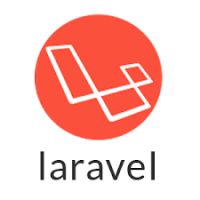Dive into our detailed breakdown comparing Laravel vs Symfony. Discover which PHP framework suits your web development needs best.
More...
With many frameworks available in the market, it can be a daunting task to choose the one that best suits our requirements. In this comprehensive article, we will provide an in-depth analysis comparing two popular PHP frameworks: Laravel vs Symfony. By exploring their features, capabilities, and differences, we aim to help you make an informed decision on which framework to use for your upcoming projects.
In this breakdown, we will delve into various aspects of Laravel and Symfony to help you understand their individual strengths and weaknesses. We will compare their architecture and design patterns, ease of use, performance, community and ecosystem, extensibility and flexibility, and documentation and support. By the end of this article, you will have a better understanding of the similarities and differences between Laravel and Symfony, and be equipped with the knowledge to make an informed decision.
So, let's get started with our comparison of Laravel vs Symfony frameworks.


Introduction to Laravel and Symfony
Before we dive into comparing Laravel vs Symfony, we will provide a brief introduction to each framework individually.
 | LaravelLaravel is a free, open-source PHP web application framework that was released in 2011. It was created by Taylor Otwell, with a focus on elegant syntax and ease of use. Laravel has become one of the most popular PHP frameworks, with a large and active community of developers. It offers powerful features such as built-in authentication, routing, and query building, making it an ideal choice for web development projects of any size. Laravel's popularity can also be attributed to its strong ecosystem of libraries, packages, and tools, which allow developers to easily extend and customize their applications. |
 | SymfonySymfony is another popular, free, open-source PHP web application framework. It was released in 2005 by Fabien Potencier, with a focus on flexibility, scalability, and maintainability. Symfony has a modular design, with each component being reusable and decoupled from the rest of the framework. This allows developers to use only the components they need, making Symfony a highly modular and adaptable framework. Symfony's strong emphasis on best practices, combined with its flexibility and scalability, makes it an excellent choice for large-scale web development projects. |
Now that we have introduced Laravel and Symfony, we can move on to comparing their key features and capabilities in more detail.
Laravel vs Symfony: Architecture and Design Patterns
When it comes to developing web applications, the architecture and design patterns of a framework are essential considerations. They affect the organization of code, the scalability of applications, and ultimately, the success of your project. In this section, we will explore how Laravel and Symfony approach architecture and design patterns and their similarities and differences.
- 1Laravel follows the Model-View-Controller (MVC) architectural pattern where the application logic is separated into three distinct parts: the model, the view, and the controller. This separation of concerns allows for better organization of code and enhances the maintainability of applications. Additionally, Laravel provides a multitude of built-in features, such as routing, middleware, and database migrations, that facilitate MVC-based development. Regarding design patterns, Laravel incorporates several well-known patterns such as the Singleton, Facade, and Dependency Injection patterns. These patterns promote code reusability and flexibility, enabling developers to create scalable and maintainable applications.
- 2Symfony, on the other hand, follows an architectural pattern known as the Model-View-Controller (MVC) pattern. Similar to Laravel, Symfony also has built-in components that support the MVC pattern, such as routing, security, and console commands. Concerning design patterns, Symfony incorporates several patterns that promote code reusability and testability, such as the Dependency Injection, Observer, and Decorator patterns. These patterns encourage the separation of concerns and make applications more modular and flexible.
- 3Similarities and Differences: Both Laravel and Symfony follow similar high-level architecture patterns, such as the separation of concerns and the use of components for building scalable applications. However, Laravel's MVC pattern is more straightforward and widely used in the PHP community, while Symfony's MVC pattern is a bit more complex, but also more flexible and modular.
In terms of design patterns, both frameworks incorporate several well-known patterns that promote code reusability and flexibility, such as the Dependency Injection pattern. However, Laravel places more emphasis on the use of Facades, while Symfony emphasizes the use of Interfaces.
Ease of Use and Learning Curve
One of the factors to consider when choosing a framework is the ease of use, especially for developers new to these frameworks. In this section, we will evaluate the user-friendliness and documentation of Laravel and Symfony.
 | LaravelLaravel is known for its intuitive and straightforward syntax, making it easier for developers to learn and use. The framework also offers an extensive and well-organized documentation, covering all its features and functionalities. With a large and supportive community, Laravel also provides ample resources for developers to find solutions to any issues they may face. |
 | SymfonySymfony has a steeper learning curve compared to Laravel. However, it provides a highly modular and customizable architecture, giving developers the flexibility to adapt their applications as necessary. The documentation for Symfony is comprehensive but can be overwhelming for beginners. The supportive community, though smaller than Laravel's, is active and helpful. |
Framework | Ease of Use | Learning Curve | Documentation | Community Support |
|---|---|---|---|---|
Laravel | Easy to use | Low learning curve | Extensive and well-organized | Large and supportive |
Symfony | Can be challenging for beginners | High learning curve | Comprehensive but overwhelming | Active and helpful, but smaller |
Overall, both Laravel and Symfony have their strengths and weaknesses when it comes to ease of use and learning curve. Laravel provides a more beginner-friendly environment, while Symfony offers greater scalability and adaptability. It ultimately depends on the developer's preference and project requirements.
Laravel vs Symfony: Performance And Scalability
Performance and scalability are crucial factors to consider when selecting a framework for your web development projects. We have evaluated the performance benchmarks and scalability capabilities of both Laravel and Symfony to help you make an informed decision.

To assess the performance of these frameworks, we conducted various tests and analyzed their results. Laravel's robust caching features and optimized routing system allow it to process requests quickly, making it an excellent choice for applications that require high performance. On the other hand, Symfony's request/response life cycle offers developers greater control over their applications, resulting in faster page load times. However, Symfony's configuration can become overwhelming, leading to performance degradation if not managed correctly.
Regarding scalability, both Laravel and Symfony offer excellent scalability features. Laravel's Horizon provides a powerful dashboard to monitor and manage queues, making it easy to scale your application as your traffic grows. Symfony's built-in HTTP cache and reverse proxy enables it to handle a large number of concurrent users without compromising performance.
Framework | Performance | Scalability |
|---|---|---|
Laravel | Robust caching and optimized routing system result in high performance | Horizon provides a powerful dashboard to monitor and manage queues, making it easy to scale your application |
Symfony | Request/response life cycle offers greater control resulting in faster page load times | Built-in HTTP cache and reverse proxy enables it to handle a large number of concurrent users |
In conclusion, both Laravel and Symfony offer high performance and excellent scalability features. Laravel provides developers with robust caching and optimized routing, while Symfony's request/response life cycle offers greater control over the application's performance. Both frameworks offer a powerful set of tools to scale your application as traffic grows.
Community And Ecosystem
The support from the community and the availability of a rich ecosystem are vital factors that can affect the choice of a framework. Laravel and Symfony both have active communities that provide extensive support, resources, and guidance to developers.

The Laravel community has a vibrant and growing ecosystem that offers various packages, tools, and integrations. It has a dedicated website called Laravel News that provides the latest news and updates about the framework. Additionally, there are many forums, blogs, podcasts, and social media groups where developers can share their experiences, ask for help, and collaborate with others.
On the other hand, Symfony also has a large and thriving community that provides comprehensive documentation, tutorials, and resources. The Symfony ecosystem has many powerful and feature-rich tools, such as the Symfony Console, which enables developers to create robust CLI applications. The Symfony community has a designated website called Symfony Casts that offers screencasts, video tutorials, and live training events.
Framework | Community | Resources |
|---|---|---|
Laravel | Active and growing | Dedicated website, many forums, blogs, podcasts, and social media groups |
Symfony | Large and thriving | Comprehensive documentation, tutorials, Symfony Console, Symfony Casts |
Both Laravel and Symfony have vibrant and active communities that offer extensive support and resources. However, Laravel's community seems more diverse and has a broader range of resources, including podcasts and social media groups. In contrast, Symfony's community is focused on providing high-quality documentation and tools, such as the Symfony Console and Symfony Casts, that enable developers to create robust and complex applications.
Extensibility and Flexibility
One of the most significant advantages of both Laravel and Symfony is their extensibility and flexibility. These frameworks offer developers the freedom to customize and adapt their applications according to their specific needs. However, there are some differences in the way they approach extensibility and flexibility.
 | LaravelLaravel is known for its built-in features and ease of use. It offers a robust set of tools and features to help developers build complex applications quickly. Laravel's modular architecture allows developers to extend their applications by creating and integrating packages easily. Laravel's extensive documentation provides detailed instructions on creating custom packages and libraries. Laravel also supports Composer, which makes it easy to manage dependencies and integrate third-party packages. Laravel offers flexibility in terms of its routing system. Developers can create routes easily and group them for better organization. Laravel also offers middleware, which allows developers to create custom middleware for specific tasks, such as authentication and authorization. |
 | SymfonySymfony offers a flexible architecture that allows developers to customize and extend their applications easily. Symfony is built around a set of decoupled components that can be used independently or together. Developers can use any component on its own or mix and match to create a customized framework. This flexibility makes Symfony an ideal choice for complex applications that require customization. Symfony's event-driven architecture allows developers to create and subscribe to events easily. This feature helps developers customize their applications and execute specific tasks in response to specific events. Symfony also offers a powerful dependency injection container that allows developers to manage their dependencies and configure their services easily. |
Overall, both Laravel and Symfony offer significant flexibility and extensibility, with each framework providing its own unique advantages. Developers can choose the framework that best suits their development needs based on their specific requirements.
Other framework comparisons from Bluebird:
FAQ
What is Laravel?
Laravel is a PHP web application framework that provides an elegant syntax and a range of powerful features to make web development efficient and enjoyable.

What is Symfony?
Symfony is a PHP framework that follows the Model-View-Controller (MVC) architectural pattern and offers a set of reusable components for developing robust and scalable web applications.
What are the key factors to consider when choosing a framework?
When choosing a framework, it's important to consider factors such as architecture and design patterns, ease of use and learning curve, performance and scalability, community and ecosystem support, extensibility and flexibility, and documentation and support.
How do Laravel and Symfony approach architecture and design patterns?
Laravel follows the MVC architectural pattern, while Symfony also adopts the MVC pattern but with a strong emphasis on reusable and decoupled components.
Are Laravel and Symfony beginner-friendly?
Both Laravel and Symfony provide comprehensive documentation and intuitive interfaces, making them accessible to developers of all skill levels. However, Laravel is often considered more beginner-friendly due to its elegant syntax and beginner-friendly features.
How do Laravel and Symfony perform in terms of performance and scalability?
Laravel and Symfony are both highly performant frameworks, but Symfony typically outperforms Laravel in terms of raw performance. However, Laravel provides numerous caching and optimization features that can enhance scalability and performance.
Which framework has a larger community and ecosystem?
Laravel boasts a larger and more active community, with a vast ecosystem of plugins, packages, and resources. However, Symfony also has a strong community and a rich ecosystem, particularly in enterprise-level applications.
Can I extend the functionalities of Laravel and Symfony?
Both Laravel and Symfony offer extensive extensibility and flexibility. Developers can leverage a wide range of plugins, packages, and libraries to extend and customize their applications according to their specific needs.
How is the documentation and support for Laravel and Symfony?
Both Laravel and Symfony have excellent documentation, providing detailed explanations and examples. Additionally, they have active support communities, forums, and dedicated support channels to assist developers with any issues or queries they may have.
What is the conclusion of the comparison between Laravel and Symfony?
Based on the comparison of features, characteristics, and performance, the choice between Laravel and Symfony depends on your specific requirements. Laravel is ideal for rapid application development and beginner-friendly projects, while Symfony excels in large-scale enterprise applications and projects with complex requirements.
